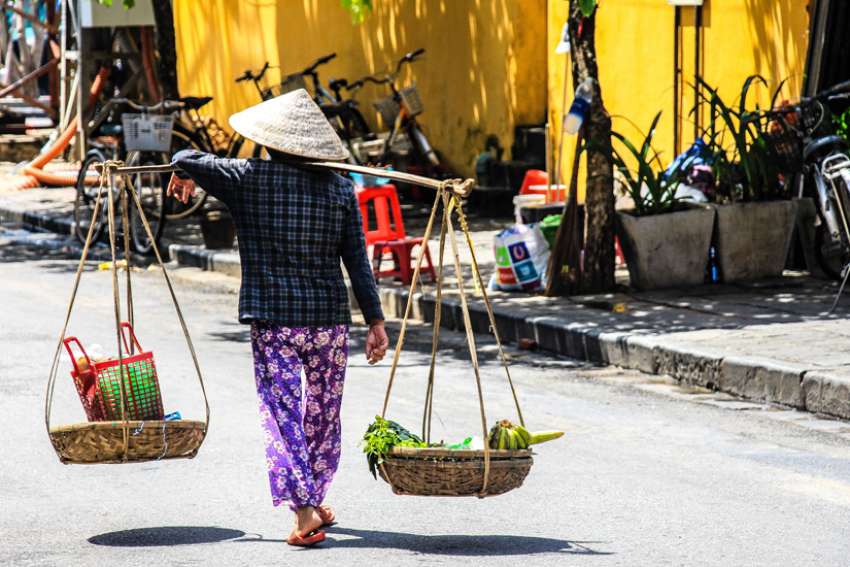As I grew older, I understood that this act, called Dâng Hoa, was a Vietnamese act of piety often done during the Marian month. I learned that Vietnamese Catholics everywhere in the world took a lot of pride and importance in this tradition.
Dâng Hoa literally means “offering flowers.” At my parish, Dâng Hoa takes place before all Sunday Masses of May. Girls and boys dressed in the áo dài (a traditional, formal Vietnamese garment) hold flowers and candles to offer to the Blessed Virgin Mary.
This is all done in a form of a prayerful dance while three hymns are sung.
The first hymn speaks of the act of offering flowers to Mary. The second hymn speaks of the five colours of flowers each used to represents a virtue of Mary. The last hymn is often a commonly known hymn, honouring the Virgin Mary.
All of this is not a performance. Rather, it helps the congregation recollect themselves in prayer and devotion to our Blessed Mother.
Along with this, the Vietnamese hold on to a variety of other unique acts of piety, such as ngắm đứng, which is an act of praying with a series of meditations on the last hours of Jesus.
These acts are unique to Vietnamese Catholics, but they helped me realize that other cultures also have their own acts of piety.
For example, the Polish have the custom of sharing the oplatek wafer during Christmas and other cultures from Eastern Europe observe the custom of the Blessing of the Food on Holy Saturday.
Though some traditions may differ from culture to culture, these celebrations helped me understand the meaning of the word “catholic,” meaning universal.
Even though Catholics all over the world may express the faith in different ways or find different means to increase our faith, everyone is connected in faith every time we share in the Eucharist at Mass.
Now that I am a sacristan at St. Michael’s Cathedral Basilica on weekends, I have started to appreciate the unique acts of piety of the Vietnamese even more.
While I love the traditional style liturgy at the Cathedral, I miss participating in the Vietnamese Catholics traditions. This is part of my blood.
We should all take pride in practising our own culture’s acts of piety. These traditions are deeply grounded in the faith of our cultural ancestors and are worth passing on from generation to generation.
(Pham, 18, is a Grade 12 student at Chaminade College School in Toronto.)


